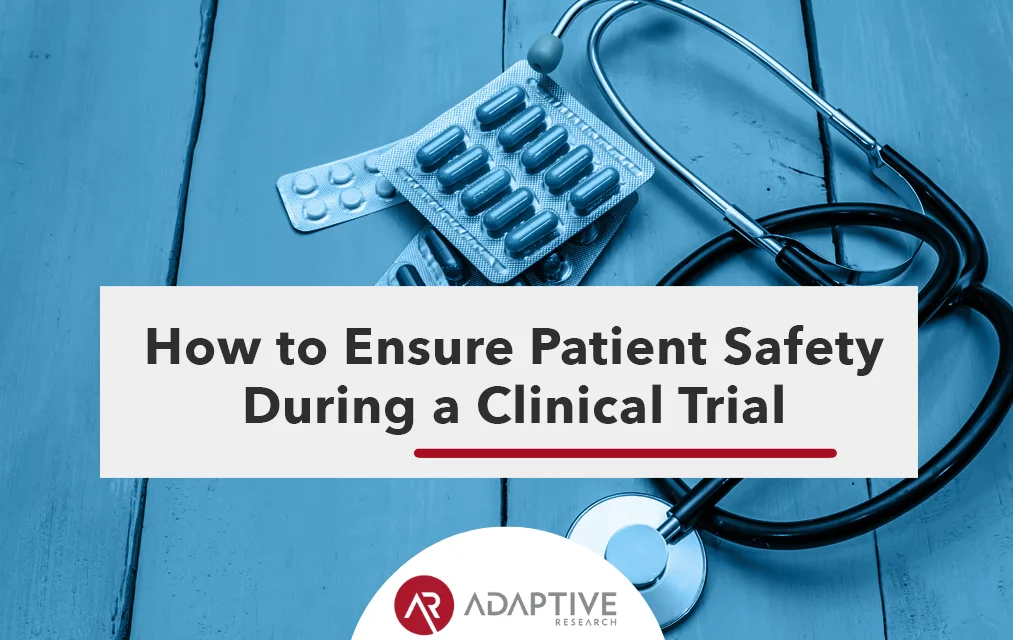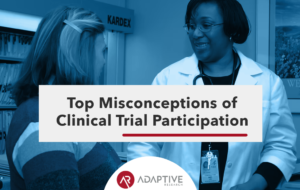The patients who volunteer to participate in clinical trials are the backbone of medical research. They provide key information about their particular disease and what will help people with that disease in the future worldwide.
However, participating in a clinical trial is always associated with some degree of risk. The experimental treatment might be less effective than standard therapy, and there may be unpredictable adverse effects that can’t be detected until after participants have taken part. This is where informed consent becomes critical to protect both participants and researchers. The goal is to balance potential benefits vs. risks while gathering high-quality data for everyone involved: patients, care teams, and study coordinators alike.
Surprisingly, though, one important element in the informed consent process is often ignored: safety. While prospective participants have a right to know all potential risks involved with participating in a study, one side of this equation isn’t always addressed—how much risk arises from not participating. In other words, patients who don’t participate may miss out on important treatments or could be at higher risk for illness or death because they didn’t receive the “new” treatment being tested. This, in turn, can negatively impact health care costs and overall patient care.
To address this issue and offer a solution, here are three suggestions:
- Develop options for treatment outside of clinical trials.
- Ensure that research coordinators provide unbiased information regarding available treatments during the informed consent process.
- Monitor the health of patients who decline to participate in clinical trials or are unable to participate.
The Importance of Participant Safety
Clinical research is essential to ensuring that the benefits of new drugs and devices outweigh their risks. The Food and Drug Administration (FDA) routinely approves new drug therapies for distribution to the public after clinical trials indicate that the benefits of using a given product outweigh any possible or known risks. However, before drugs or devices are allowed out on the market, they must be tested for safety under controlled conditions.
There are three types of clinical trials: therapeutic, diagnostic, and prevention studies. Clinical research must be performed to protect human subjects from harm or damage due to participation in such studies. Doctors consider potential drug interactions when prescribing medications to patients already taking other substances. Researchers should also properly account for all drugs and pesticides that a study participant is using before they can be allowed to join a clinical trial involving a new treatment. To ensure the safety of clinical trial participants, researchers rely on Institutional Review Boards (IRBs), whose job it is to make sure potential benefits outweigh the risks associated with participation in research studies.
Different types of studies have different levels of risk, from minimal to greater than minimal, depending on the circumstances. For example, diseases that are not very contagious pose lower risks than those that are easily transmitted through contact between two people. Researchers consider all relevant factors when determining whether or not a drug being tested is safe enough for human exposure. These elements include:
- The potential harm to participants
- The level of risk
- The likelihood that the drug will do more good than harm to the patient
Another factor that should be considered is whether or not the study drug has already been tested in previous studies. If it has, there may no longer be any risks associated with taking this medication. Even if it hasn’t been through clinical trials, there are still ways for researchers to reduce possible risks by using monitors and oversight committees (IRBs). IRB’s make sure potential benefits outweigh the risks associated with participation in research studies. Researchers also monitor participants’ progress through each phase of a trial, including adverse events. These events must be reported so that they can be immediately addressed, if necessary.
Monitoring Clinical Trials
Researchers use two types of monitors during clinical trials: independent and site. The independent monitor’s job is to ensure that the proper procedures are being followed at each trial site. They will review all aspects of a study, including the informed consent form, research design, study schedule, record keeping and data handling, adverse events, site management, and drug accountability.
Steps Towards Maintaining Safety of Participants in a Clinical Trial
In addition to garnering support from health care professionals, pharmaceutical companies, and academic researchers, the next step is to work with governmental regulatory bodies to ensure that a successful ICH-E6 clinical trial can proceed on time.
As for how best to safeguard participants during clinical trials, there are three suggestions:
- Utilize medical history information when considering potential participants for a clinical trial.
- Avoid medical “trials of chance,” which involve the random use of drugs or devices on individuals without knowing their effects or safety.
- Make certain that doctors who conduct research have appropriate experience conducting drug trials before allowing them to enroll patients in such studies.
Patient Safety During Clinical Trials
Ensuring patient safety during clinical trials is of the utmost importance to researchers. Doctors conducting these types of studies want to give their patients access to treatments that have not yet been made publicly available or have not received FDA approval for public use.
Adaptive Research is a clinical trial platform that helps streamline the development of pharmaceutical, biotech, medical device, and digital health products. Learn more here.






